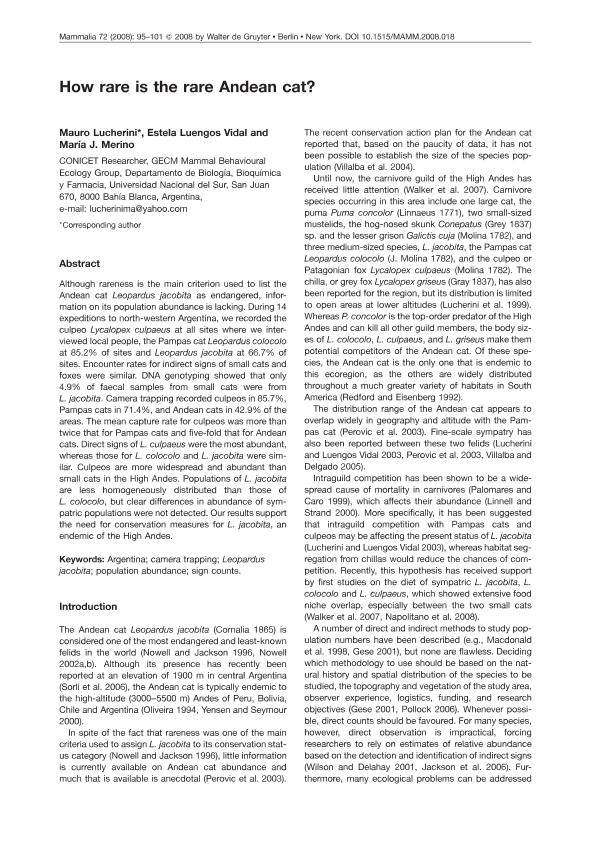Artículo
How rare is the rare Andean cat?
Fecha de publicación:
06/2008
Editorial:
De Gruyter
Revista:
Mammalia
ISSN:
0025-1461
Idioma:
Inglés
Tipo de recurso:
Artículo publicado
Clasificación temática:
Resumen
Although rareness is the main criterion used to list the Andean cat Leopardus jacobita as endangered, information on its population abundance is lacking. During 14 expeditions to north-western Argentina, we recorded the culpeo Lycalopex culpaeus at all sites where we interviewed local people, the Pampas cat Leopardus colocolo at 85.2% of sites and Leopardus jacobita at 66.7% of sites. Encounter rates for indirect signs of small cats and foxes were similar. DNA genotyping showed that only 4.9% of faecal samples from small cats were from L. jacobita. Camera trapping recorded culpeos in 85.7%, Pampas cats in 71.4%, and Andean cats in 42.9% of the areas. The mean capture rate for culpeos was more than twice that for Pampas cats and five-fold that for Andean cats. Direct signs of L. culpaeus were the most abundant, whereas those for L. colocolo and L. jacobita were similar. Culpeos are more widespread and abundant than small cats in the High Andes. Populations of L. jacobita are less homogeneously distributed than those of L. colocolo, but clear differences in abundance of sympatric populations were not detected. Our results support the need for conservation measures for L. jacobita, an endemic of the High Andes.
Archivos asociados
Licencia
Identificadores
Colecciones
Articulos(CCT - BAHIA BLANCA)
Articulos de CTRO.CIENTIFICO TECNOL.CONICET - BAHIA BLANCA
Articulos de CTRO.CIENTIFICO TECNOL.CONICET - BAHIA BLANCA
Citación
Lucherini, Mauro; Luengos Vidal, Estela Maris; Merino, Maria Jose; How rare is the rare Andean cat?; De Gruyter; Mammalia; 72; 2; 6-2008; 95-101
Compartir
Altmétricas




